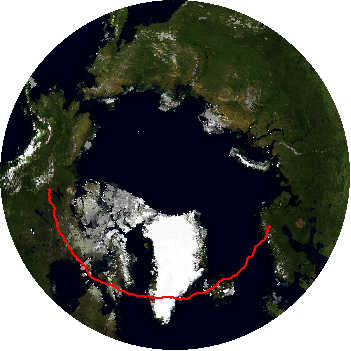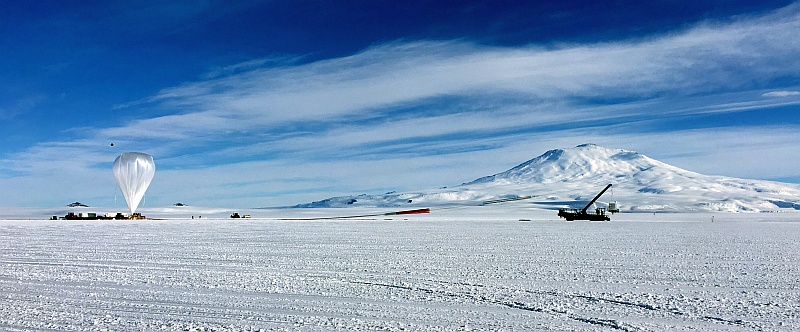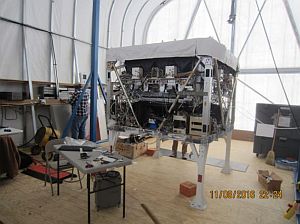News Archive
-
November, 29 2016
BACCUS: 1st. experiment launched in Antarctic campaign
McMurdo Station, Antarctica.- A few hours ago on November 28 at 19:15 utc, the Columbia Scientific Balloon Facility (CSBF) launched from the Long Duration Balloon facility at the Williams Field airport the first balloon of the Antarctic balloon launch campaign 2016/2017. At the time of writing this, after a slow climb of near four hours, the balloon reached float altitude of 129.000 ft at 23:40 utc. Now is moving at an average speed of 25 knots, following an anti-clockwise pattern over the white continent.

The map at left shows in real time the flight path of the balloon.
The payload taken aloft as mission 674N is an experiment called BACCUS (Boron And Carbon Cosmic rays in the Upper Stratosphere) developed by the University of Maryland along with the collaboration of the Pensylvania State University, the Ohio State University and NASA Goddard Space Flight Center from USA, Ewha Woman's University, KAIST and KyungPook National University from Korea, the Laboratoire de Physique Subatomique et de Cosmologie, Grenoble and the Centre d'Etude Spatiale des Rayonnements of France and finally the Universidad Nacional Autónoma de México.
Although this will be the maiden flight for BACCUS, its core is based on Cosmic Ray Energetics and Mass (CREAM) an instrument developed by the same group which performed six long duration balloon missions in Antarctica, obtaining a total ammount of 161 days of data on cosmic rays. A subset of detectors from CREAM have been upgraded and reassembled for this new payload. That means that from this flight on, BACCUS will continue the research originally performed by his predecessor: to investigate the source, propagation and acceleration mechanism of high-energy cosmic-ray nuclei by directly measuring their energy and charge, focusing on elements ranging from lithium to iron nuclei with energies up to 1015 eV.
At right we can see an image of BACCUS during the integration process at LDB camp in McMurdo. The scientific team is working on a tent structure made on a metal frame with an insulated covering slightly rounded on top, installed close to the two high bay payload assembly buildings that form the core of the facility and which every summer are towed to its place after being stored on snow berms during the rest of the year.
I must confess that I've missed completely the launch. I was ready to closely watch the CSBF page from December on, when I've presumed that operations would begin, so the heads up received from a friend took me by surprise. However, after a quick check to StratoCat's database I've found a good reason for my surprise: this launch marks a new first for NASA operations on the ice. According to my records, since the program inception in 1992, BACCUS is the first mission taking part of an Antarctic campaign launched as early as November.
The only exception are the small balloons launched before the start of each campaign called "pathfinders" which are used to check the onset of the polar vortex, the circular stratospheric pattern typical of the December-January window. This vortex prevents the balloons from drifting away of Antarctica, and allows to perform as far as two or three circumnavigations to the white continent in a very stable manner. As many of you know, I love this silly ballooning facts :-)
A few hours after launched, NASA published the news of the launch on his website, including some nice pictures of the operations like the one under these lines.

Hope to be more prepared for the next three attempts: remember that also will be launched during the campaign ANITA IV, ANITA Hi-Cal and STO-2. You can learn more on them reading my previous post on the Antarctic campaign.
Stay tuned !
-
Share this on social media



